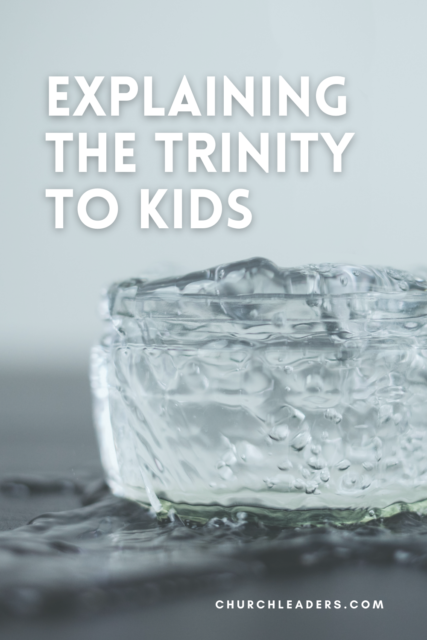Explaining the Trinity to children can be challenging. The nature of our Triune God is a mystery. So we can’t fully understand God’s three-in-one nature. But we can and should grow in our understanding of the Trinity. After all, it’s core to our Christian faith and doctrine. Don’t brush aside explaining the Trinity to children!
When explaining complex subjects to kids, we tend to look for a solid object to explain abstract truths. Some go-to objects for explaining the Trinity to children include water, apples and eggs. How do I know? Because I’ve been guilty of using them all.
So when I address misconceptions, it’s from a place of mutual understanding. Although this article isn’t comprehensive, I hope it’s useful and accurate.
Why emphasize the Trinity? It’s a core doctrine of our Christian faith. But because it’s complex, a visual illustration is helpful for kids. I’ve used illustrations that answer kids’ questions about the Trinity but at the expense of mystery and truth. One analogy is to the states of water.
Expert Insights on Teaching the Trinity
Dr. Bruce Ware explains in Big Truths for Young Hearts:
Yet others have thought that H20 (water) shows us the Trinity since H20 can be three things: solid (ice), liquid (running water) and vapor (steam). But the same H20 molecules cannot be all three at exactly the same time. H20 is a good illustration of modalism (a false teaching of the Trinity that we’ll learn more about later) where God is first the Father, then the Son and then the Spirit, one at a time. But the Bible teaches that God is Father, Son and Holy Spirit all at the same time. Each Person lives eternally as God.
The closest thing I’ve imagined to the Trinity is drawing one circle using three colored markers (perhaps red, blue and green). If you draw the same circle three times, with each color overlapping exactly the previous one, you have one circle. But the red line is not the blue line, and the blue line is not the green line. Yet all three lines enclose only one circle. While this illustration may work in a very small part, the truth is that there simply is nothing in our experience that shows us exactly what the doctrine of the Trinity teaches.
Nothing quite works to show what it means for God to be one in his nature as the one true God, yet three in Persons as the Father, Son and Holy Spirit, each fully God. But we should not be surprised at this. After all, the Bible has told us many times that there is no one like the Lord (Exodus 8:10; Deuteronomy 33:26; Jeremiah 10:6–7). He is the one and only true and living God, and he also is unlike anything or anyone else.
3 Tips for Explaining the Trinity to Children
Next, here are three reasons children’s ministers should use precise illustrations about the Trinity.
1. It’s Okay to Leave Room for Mystery.
We let kids know that we don’t just take deep things about God, put a bow on them, and move on. When we rightly try to solve kids’ questions with pat answers and simple analogies, we simplify rather than deepen their faith. Why? Because we leave no room for mystery.


